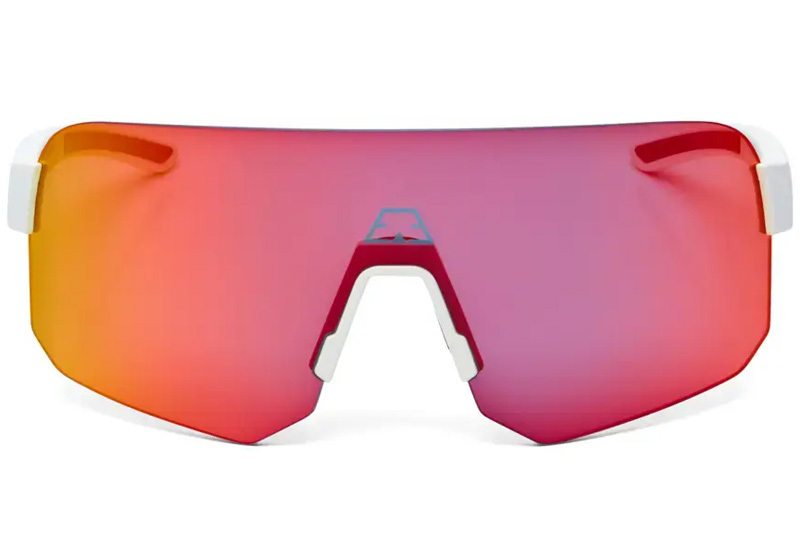
Tech
ProAdapt®
For athletes, every detail matters - including your vision. PPEEQQ ProAdapt photochromic lenses dynamically adapt to lighting conditions, so you can focus entirely on performance. No distractions, no compromises.
How It Works:
The lenses contain micro-particles that react to UV radiation. In bright light, they darken within seconds for optimal protection and contrast, while clearing up indoors or in shade.
This technology ensures:
- Instant adjustment to changing light conditions (e.g., moving from forest to open field).
- 100% UV protection (UVA/UVB), critical for prolonged exposure.
- Enhanced contrast for sharper vision, even with sudden light shifts.
Performance Benefits:
- No need to switch glasses during training or competition.
- Reduced eye strain with consistent optimal light transmission.
- Durable and lightweight, designed for high-intensity use.
Technical Specifications:
Reaction time: instant result (full adaption < 30 seconds (depends on temperature and UV intensity).
Tint level: Variable (e.g., category 1–3, depending on the model).
Material: Impact-resistant polycarbonate, ideal for sports eyewear.
Sustainability: 100% PFAS FREE.
Hydroleophobic®
PPEEQQ’s oleophobic and hydrophobic lens coatings ensure your eyewear stays clean, clear, and distraction-free.
How It Works:
Hydrophobic coating repels water, causing droplets to bead up and roll off—eliminating streaks and maintaining visibility in rain or high humidity.
Oleophobic coating resists oils, residues, and fingerprints, so your lenses stay contaminant-free longer, even during intense activity.
Performance Benefits:
- Crystal-clear vision in all conditions.
- Easier cleaning with less residue.
- Long-lasting durability, designed to withstand rigorous use.
Engineered for Athletes:
Whether you're cycling through rain, running in humid conditions, or wiping away sweat, these coatings keep your lenses pristine. No distractions. Just focus.
Technical Specifications:
Water contact angle: >110° (hydrophobic).
Oil resistance: Reduces smudges by up to 90%.
Sustainability: 100% PFAS FREE
Anti-Fog
Fogged lenses can ruin a critical moment - whether you're sprinting, climbing, or transitioning between temperatures. Anti-fog lens coating eliminates condensation, so your vision stays sharp no matter how intense the action gets.
How It Works:
The coating creates a hydrophilic surface that disperses moisture evenly, preventing fog buildup caused by sweat, humidity, or rapid temperature changes.
This technology ensures:
- Instant clarity during high-exertion activities.
- No wiping required—so you stay focused on performance, not your gear.
- Long-lasting effectiveness, even in extreme conditions.
Performance Benefits:
- No fogging during workouts, races, or sudden weather shifts.
- Enhanced safety with consistent visibility in all environments.
- Durable protection that withstands repeated use and cleaning.
Engineered for Athletes:
No matter the type of sport, this technology keeps your lenses clear when it matters most. No interruptions. Just pure focus.
Technical Highlights:
Moisture dispersion: Prevents droplet formation on the lens surface.
Application: Permanent bond to the lens for lasting performance.
Sustainability: 100% PFAS FREE.
R C E
In sports, every detail counts. Refined Contrast Enhancing (R C E) lens coatings amplify visual definition by selectively filtering light, so you see more clearly - even in low-light or high-glare conditions.
How It Works:
The coating boosts the difference between colors and objects, reducing eye strain and improving depth perception.
This means:
- Crisp, high-definition vision in flat light or variable conditions.
- Enhanced object recognition for faster reaction times.
- Reduced glare to minimize distractions and improve focus.
Performance Benefits:
- Brighter, more vivid colors for better terrain and obstacle detection.
- Improved depth perception in challenging lighting (e.g., dawn, dusk, or overcast skies).
- Less fatigue from squinting or straining to see details.
Engineered for Athletes:
Whether you're cycling, running or skiing, this coating sharpens your visual edge. See more. React faster.
Technical Highlights:
Light filtration: Targets specific wavelengths to maximize contrast.
Durability: Maintains performance through rigorous use.
Sustainability: 100% PFAS FREE
PFAS FREE
In a world where sustainability and safety matter, our lenses stand out as 100% PFAS-free - a rare commitment in the eyewear industry. We’ve eliminated forever chemicals without sacrificing performance, so you can focus on your sport with confidence and clarity.

Why It Matters:
PFAS (per- and polyfluoroalkyl substances) are commonly used in coatings for their water- and oil-repellent properties, but they persist in the environment and can pose health risks. Our innovative PFAS-free technology delivers the same high-performance benefits - hydrophobic, oleophobic, and anti-fog properties - without the ecological or health concerns.
Performance You Can Trust:
- Eco-conscious design that aligns with your values.
- No toxic trade-offs - just premium durability and optical precision.
- Industry-leading safety for you and the planet.
Engineered for Athletes Who Care:
From cyclists to runners, trail runners to speed skaters and so many more, our lenses prove that cutting-edge performance and environmental responsibility can go hand in hand. Train harder, perform better, and leave a lighter footprint.
Technical Highlights:
PFAS-free formulation: Meets strict environmental and safety standards.
Same high-performance coatings: Water, oil, and fog resistance without harmful chemicals.
Third-party certified: Validated in independent laboratory for safety and sustainability.









